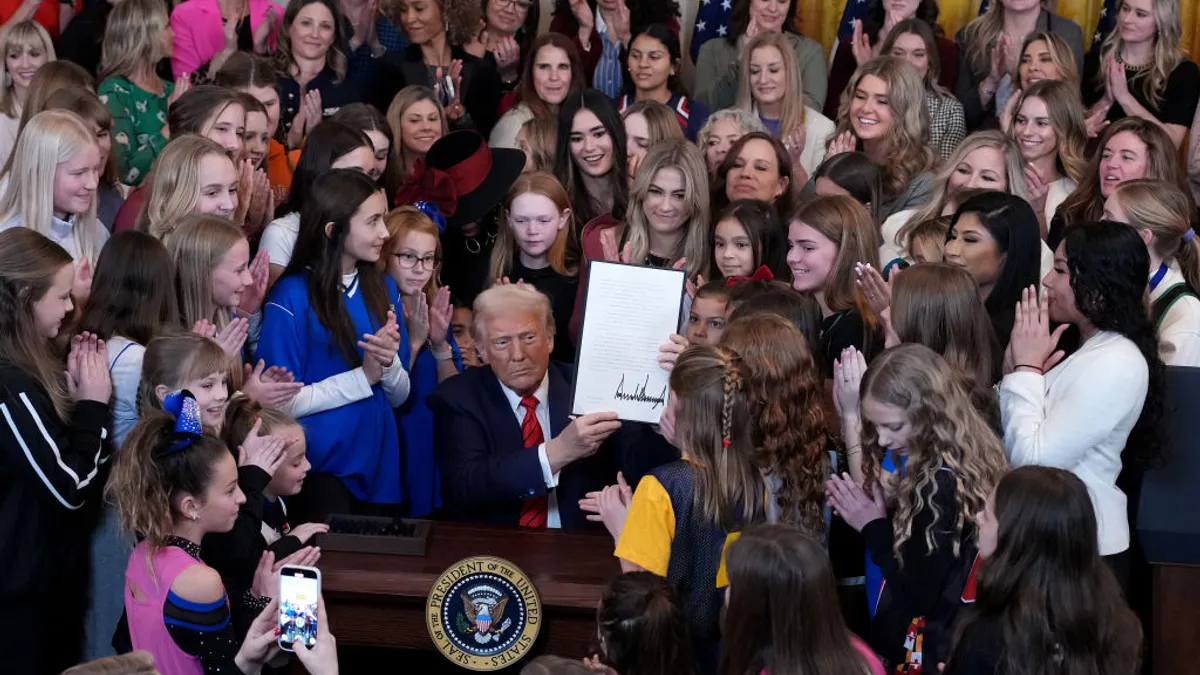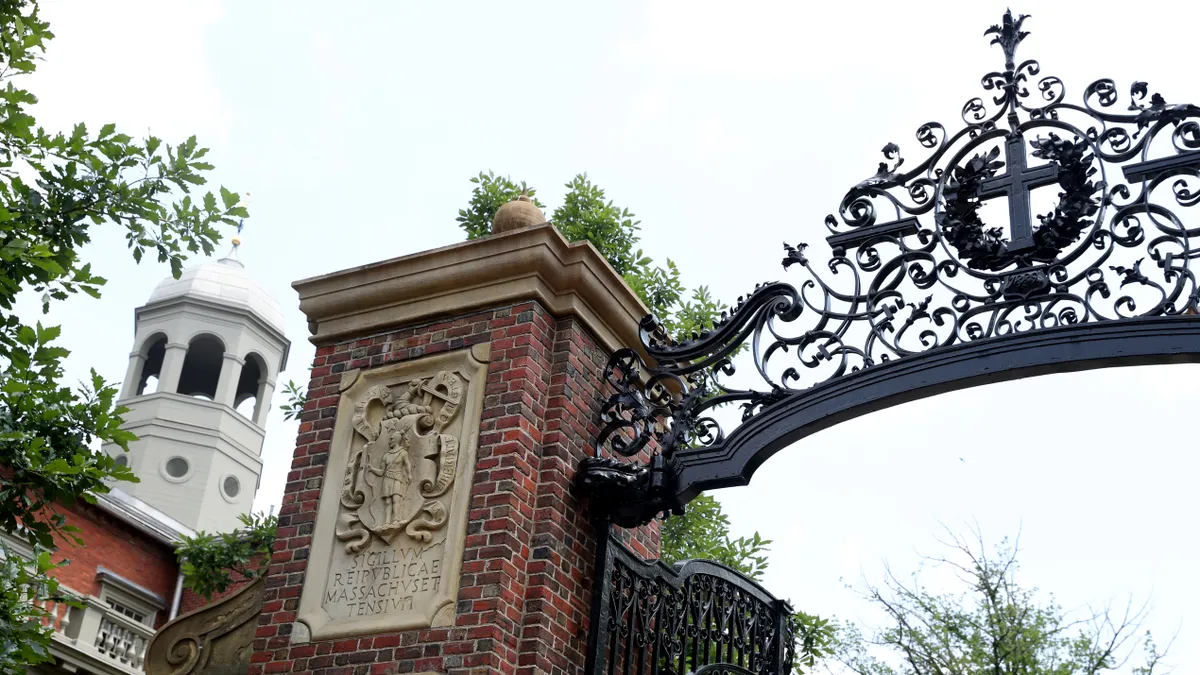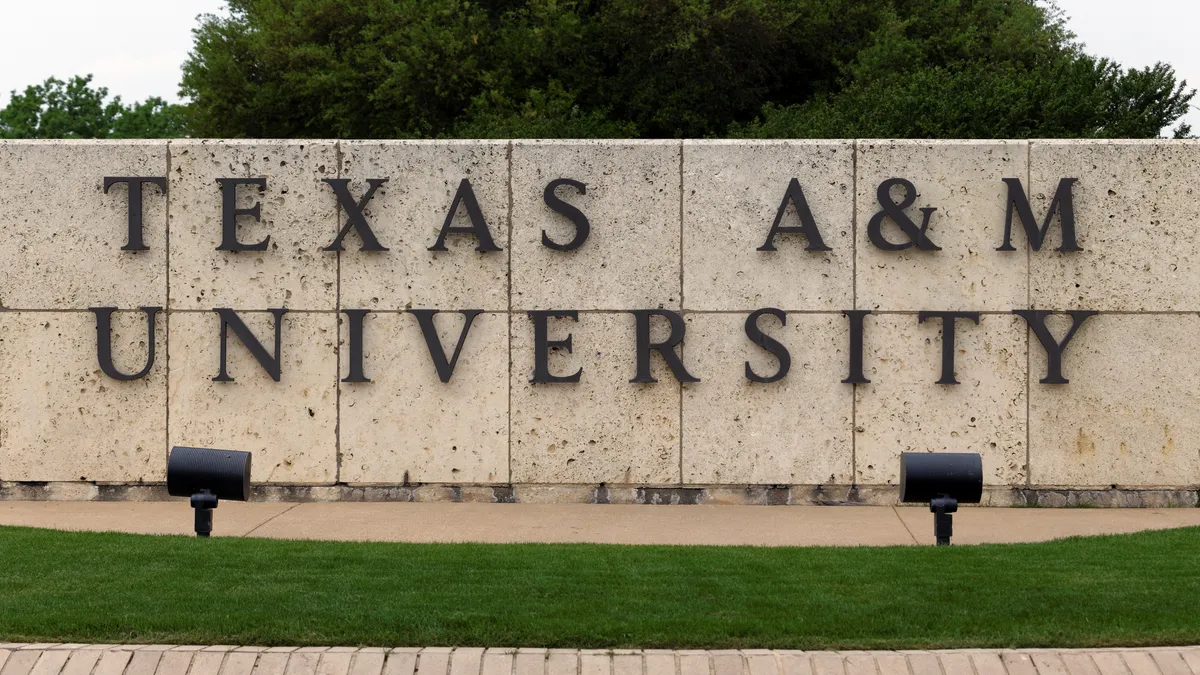U.S. News & World Report published its oft-criticized rankings of undergraduate colleges Monday, trumpeting methodology changes that evaluate social mobility outcomes after some institutions abandoned the product.
Despite U.S. News factoring in metrics like post-college earnings, the hierarchy of top-ranked universities went largely unchanged. Princeton University is still No. 1 on the list, and the Massachusetts Institute of Technology kept the second place spot.
This suggests the U.S. News has preserved the core system many higher education leaders have objected to, even while the publication touted the methodological shifts as the most significant in its history.
What did U.S. News add to its calculations?
Higher education officials have put U.S. News in their crosshairs by arguing the publication calculates rankings in ways that don't reflect their institutions' value. But it’s taken even more heat since Yale and Harvard universities dropped out of the publication’s law school rankings in November, launching an exodus of sorts.
Other law schools, as well as several medical and a few undergraduate schools, have spurned the rankings. The undergraduate lists, called the Best Colleges rankings, are U.S. News’ bread-and-butter product, so institutions like Colorado College turning away from them made headlines.
For the 2024 undergraduate rankings, the publication introduced new social mobility measures in the wake of some of these institutions’ criticisms — that the lists don’t prioritize colleges that help historically marginalized students.
“The significant changes in this year’s methodology are part of the ongoing evolution to make sure our rankings capture what is most important for students as they compare colleges and select the school that is right for them,” Eric Gertler, executive chair and CEO of U.S. News, said in a statement.
Now, 2.5% of the calculation for the National Universities category — which looks at institutions that offer a range of undergraduate, master’s and doctoral programs — is based on colleges’ success graduating students who are the first in their families to attend college. Another 2.5% accounts for their first-generation college graduation rates in comparison to their overall graduation rates.
For this part of the 2024 rankings, U.S. News used data on federal loan recipients that entered college fall 2011 through fall 2013.
The publication is also newly assessing colleges’ share of students who, four years after finishing their degree, earned more than a typical high school graduate. For high school graduates’ wages, U.S. News looked at data from the College Scorecard, a federal database that breaks down what college students earn after attending a particular institution.
U.S. News also gave greater weight to its existing social mobility factors.
In last year’s rankings, the publication based 5% of its calculations on graduation rates of students with federal Pell Grants, which target low- and moderate-income populations.
Now, the graduation rates comprise 6% of scores for the National Universities category, and 11% of other rankings lists, like best liberal arts colleges.
In addition, U.S. News incorporated new factors related to faculty research for the National Universities calculation, such as the average number of citations an institution receives in publications.
What did it drop?
U.S. News abandoned five pieces of its methodology: class sizes, the share of students in the top of their high school classes, the share of full-time equivalent faculty with terminal degrees, levels of alumni giving, and the proportion of graduates borrowing federal loans.
Critics of U.S. News have pointed to some of these factors, like class standing, as being more about colleges’ exclusivity, and having little to do with their mission of graduating students and putting them on a path to social mobility.
U.S. News retained one significant aspect of its methodology — the peer survey, making up 20% of the rankings calculation. Each year, the magazine asks presidents, provosts and admissions deans to rate institutions comparable to their own.
This element in particular has drawn scrutiny because college leaders argue the peer assessment scores can be arbitrary, especially if administrators aren’t entirely familiar with other institutions. Colleges that have walked away from the undergraduate rankings said they will not fill out the survey.
U.S. News has said it will still rank institutions that do not cooperate with the system.
Of the 4,734 academics that were sent surveys for the 2024 rankings, almost 31% responded, compared to roughly 34% from the previous year, according to the publication.
“Academic reputation matters because it factors things that cannot easily be captured elsewhere,” U.S. News said document detailing its methodology. “For example, an institution known for having innovative approaches to teaching may perform especially well on this indicator, whereas a school struggling to keep its accreditation will likely perform poorly.”
It also preserved SAT and ACT scores as 5% of the methodology, though it has developed a separate calculation for colleges that don’t receive many of them,
Where do colleges fall?
Harvard and Stanford universities continued to hold down third place in the national colleges rankings, while Yale dropped two places to No. 5. University of Pennsylvania followed Yale, with the California Institute of Technology and Duke tied for seventh.
Only the University of Chicago dropped out of the top 10 from the previous year, falling to 12th place.
U.S. News in a news release highlighted how some colleges rose on this year’s list because of methodological changes. The University of Texas at San Antonio, for instance, last year was in the bottom rungs, but jumped 92 spots to 280th place.
However, it’s debatable whether rankings shifts like these influence students’ and families’ college decisions. A recent poll by the Art & Science Group, a higher education consultancy, found 58% of high school seniors investigating colleges “actively considered” rankings, but only 5% thought they knew their first-choice institution’s placement well enough to identify it.
Colleges often still publicize their rankings placement, however, with the thinking that doing so will endear them to governing boards, donors and lawmakers.






















